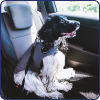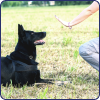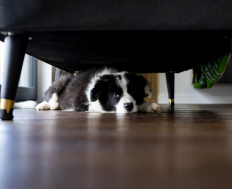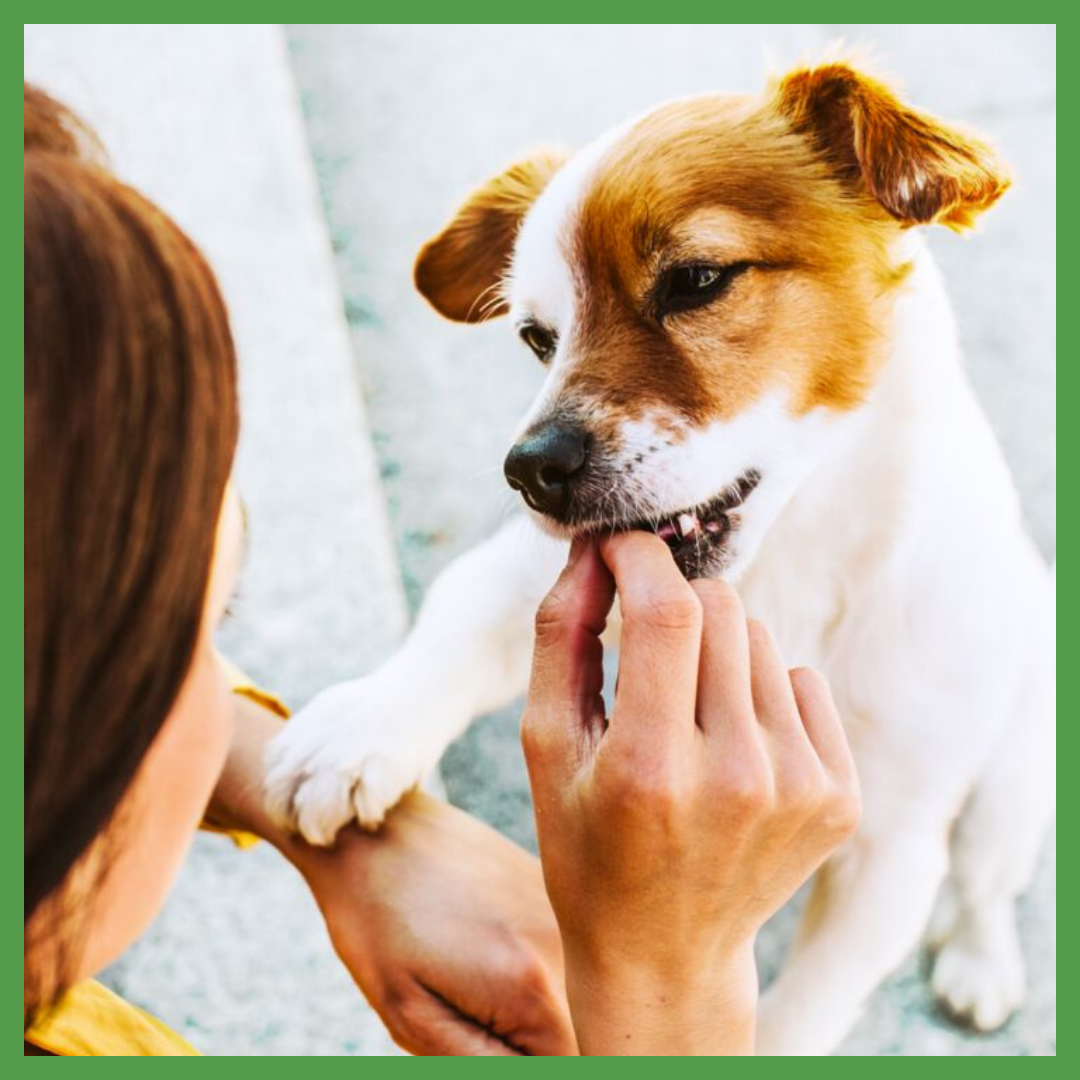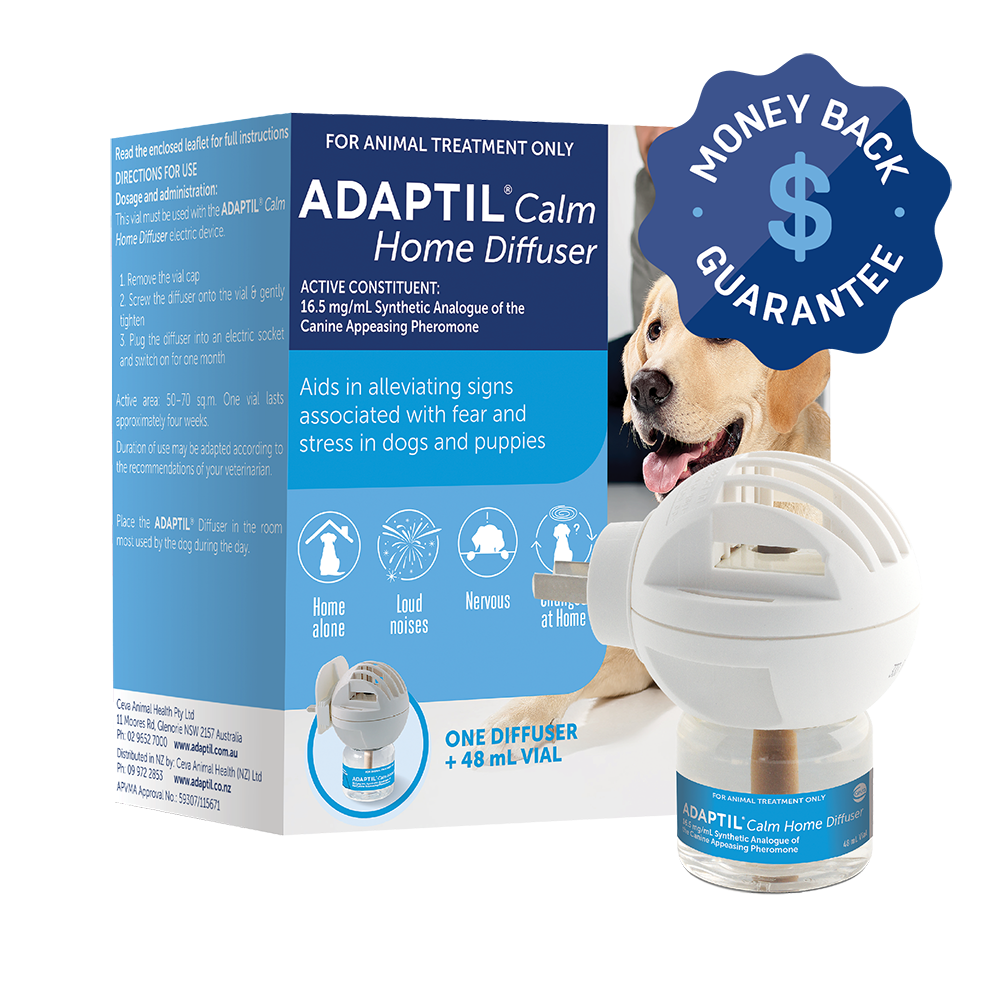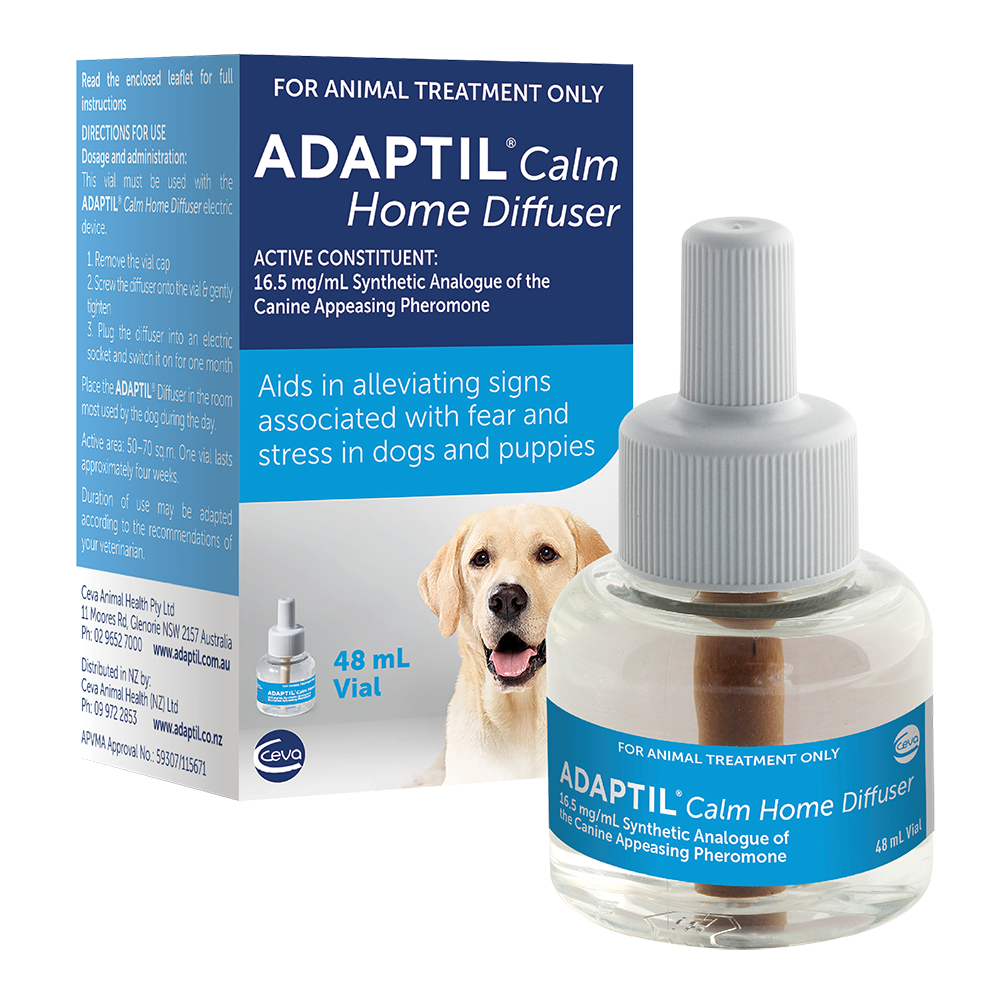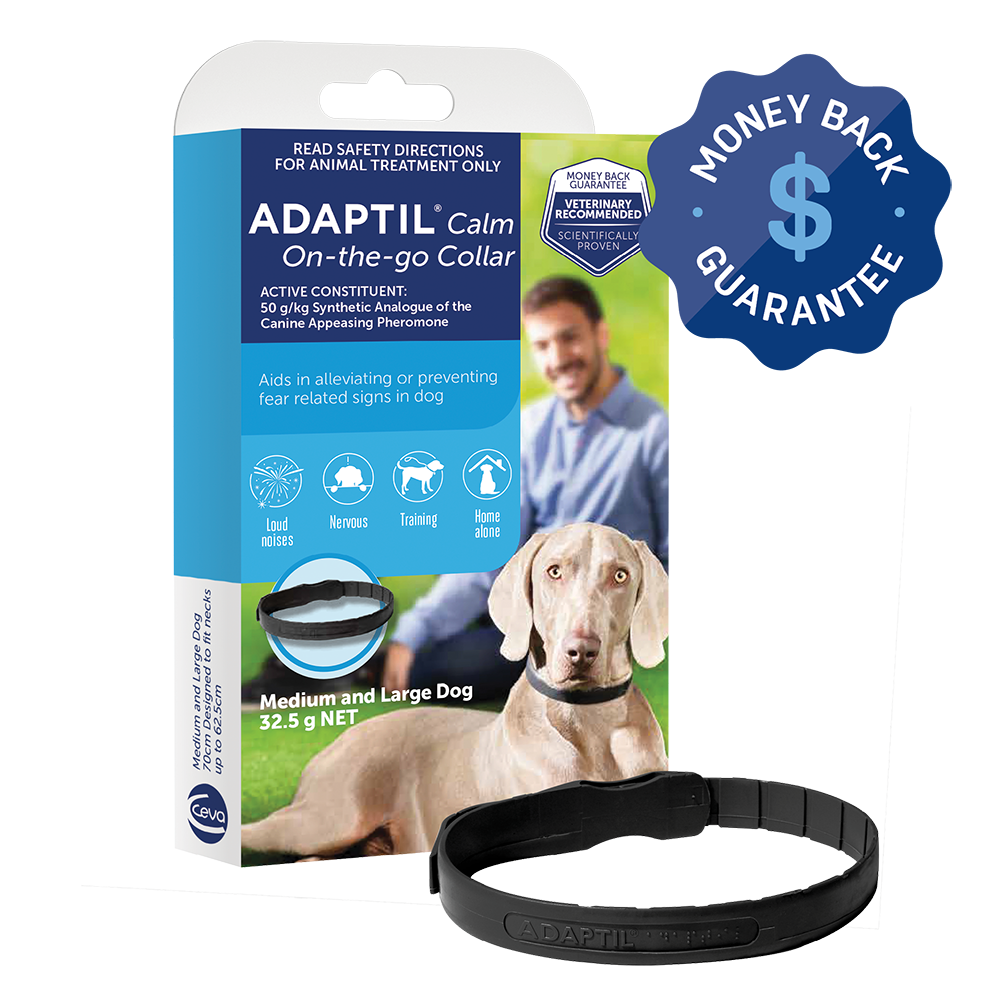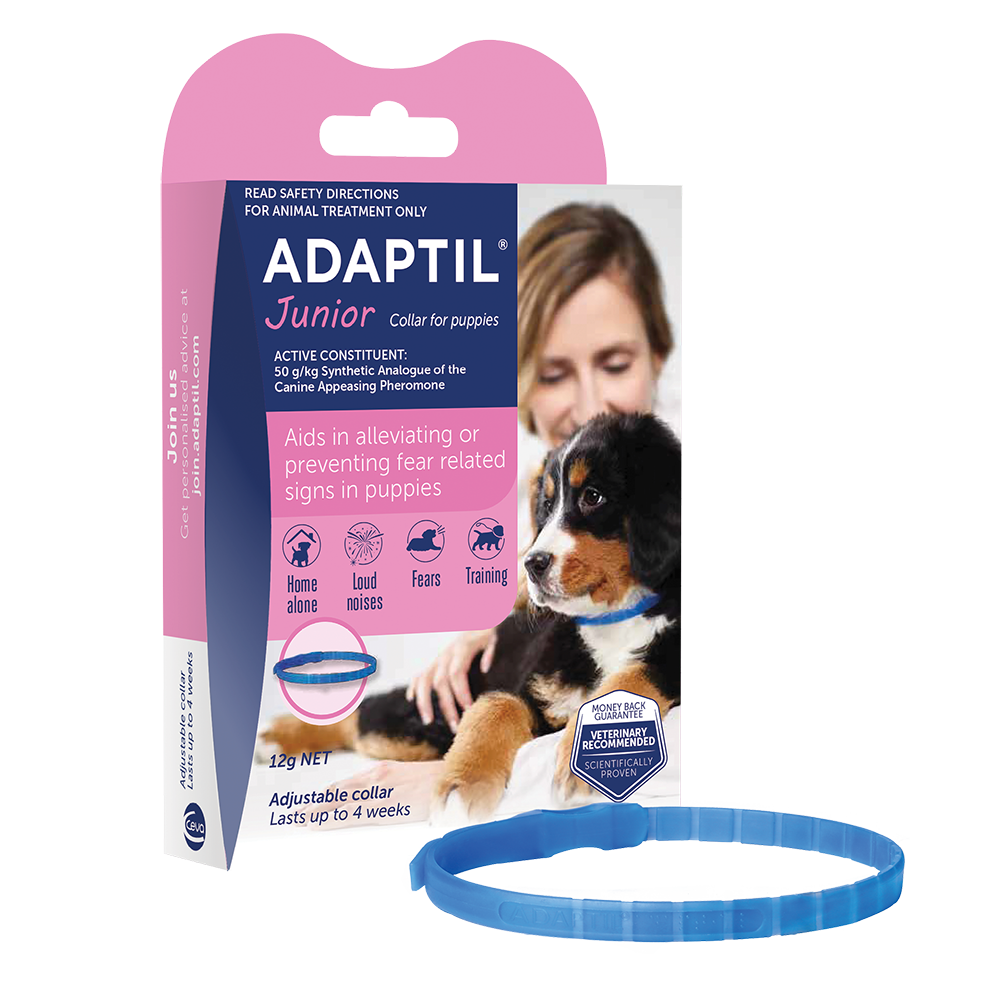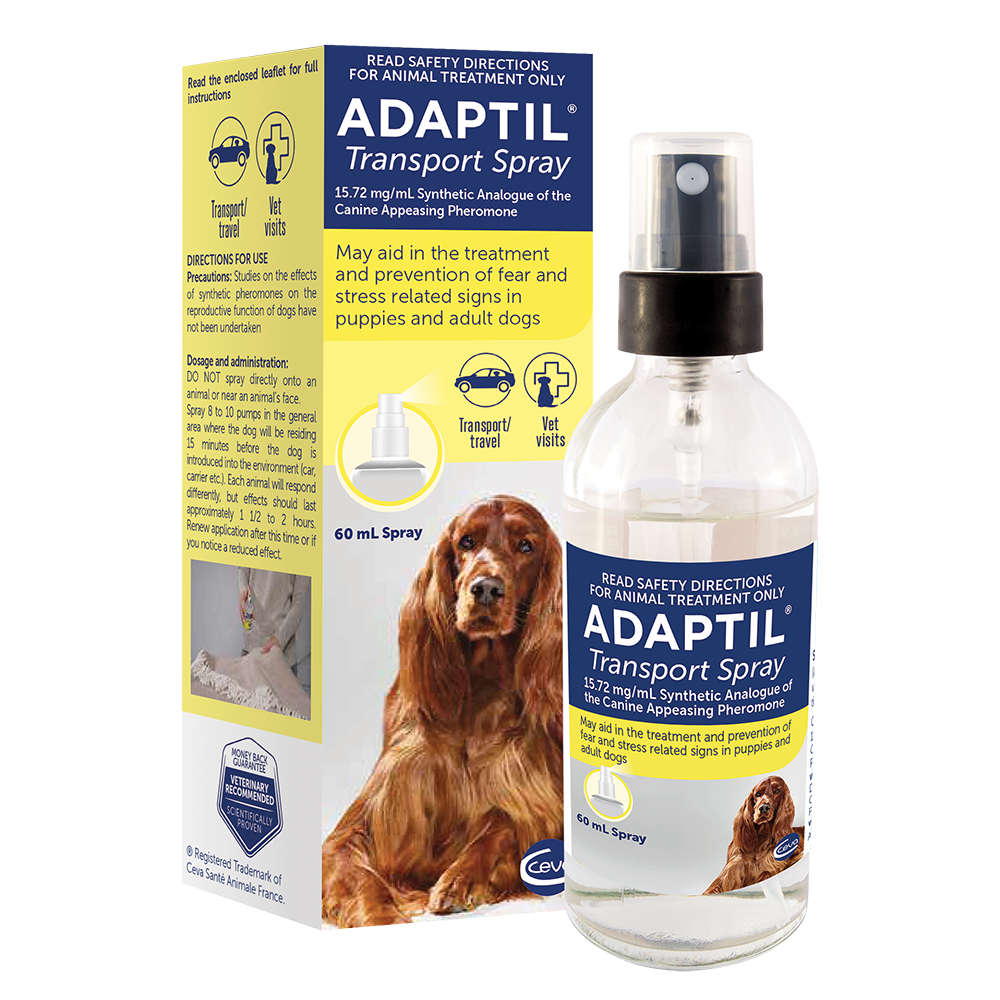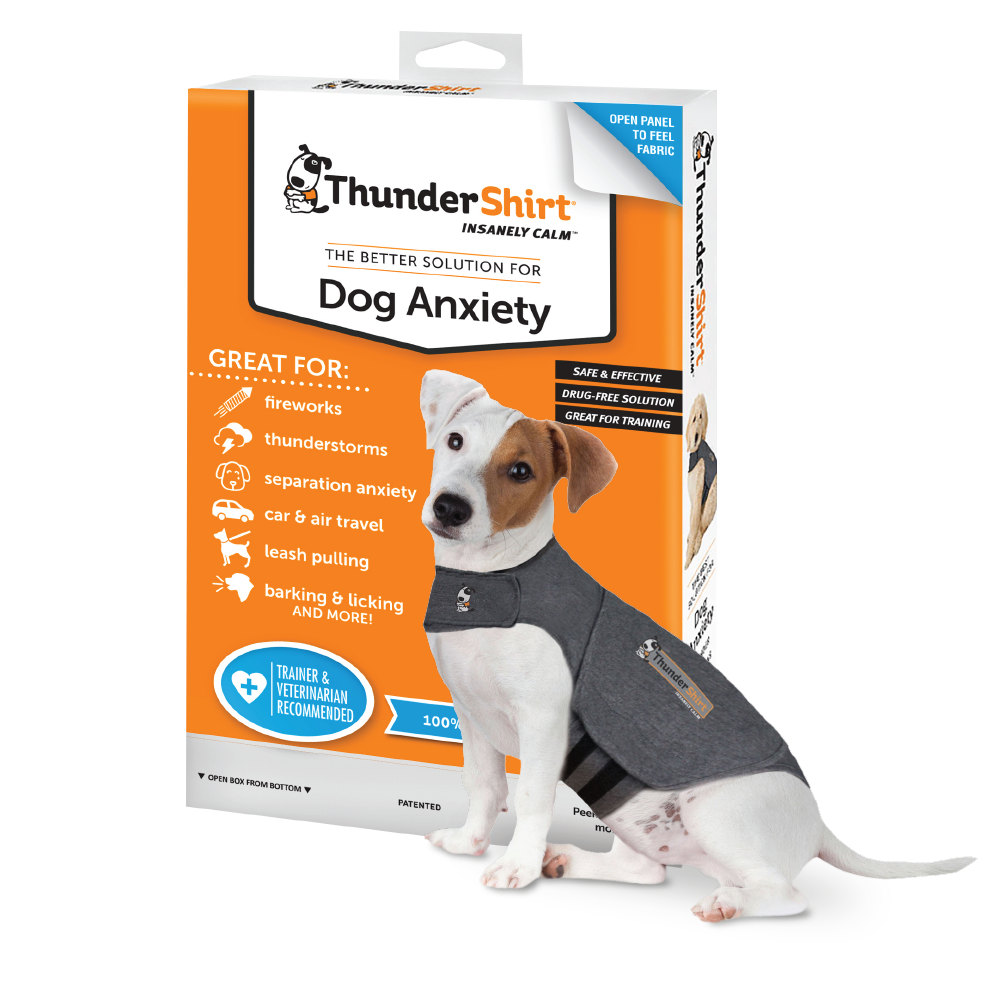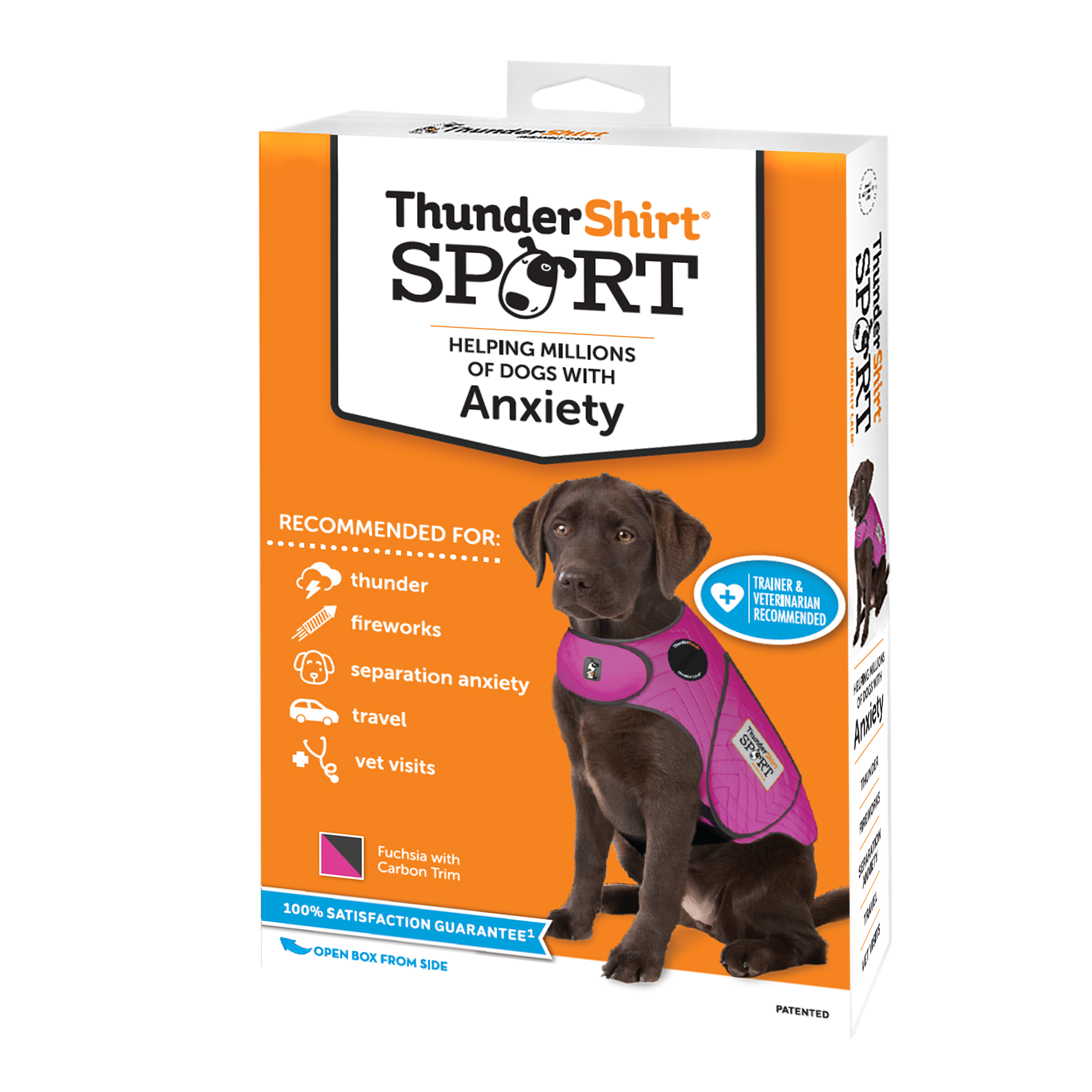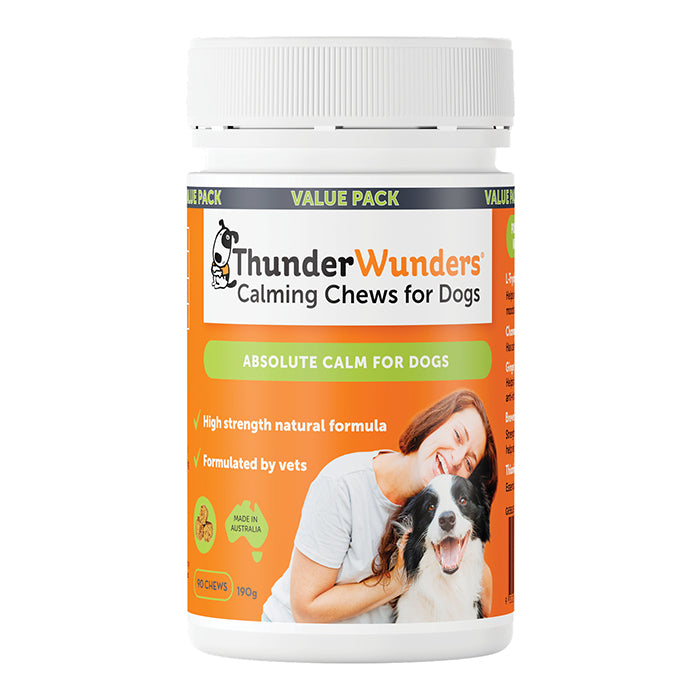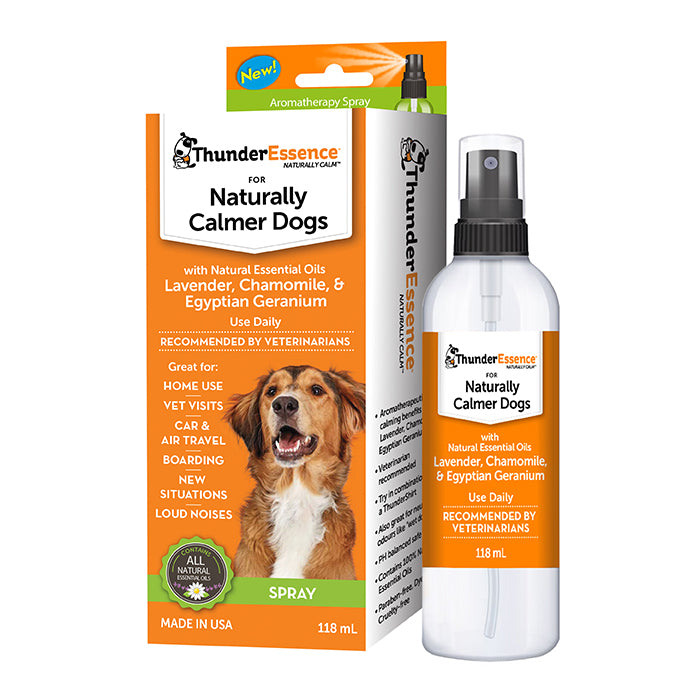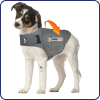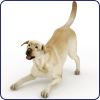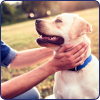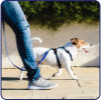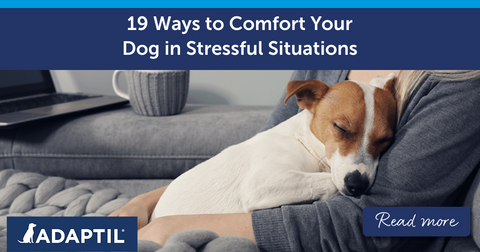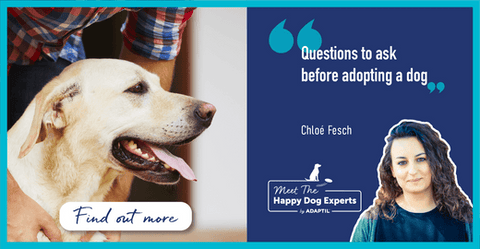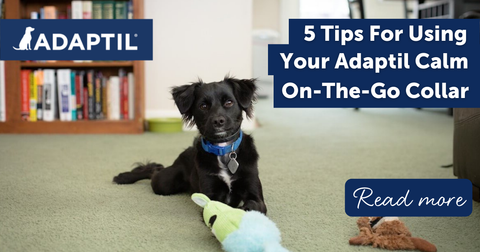With walks being a part of every dog’s daily routine, it’s important that each of us humans uses the right method of restraint between a dog collar or harness. Most dog parents will opt for one or the other, without the proper understanding of their uses and suitability for their dog. But, this should always be based on the requirements of each individual dog. Why? Because the use of a dog collar or harness depends on the breed, age and activity level.
We discuss a highly requested topic in this blog to help you determine which is better for walking your pooch! But before we get started, let’s talk about the differences between the two and the general guidelines for when a dog collar or harness should be used.
Dog Collars
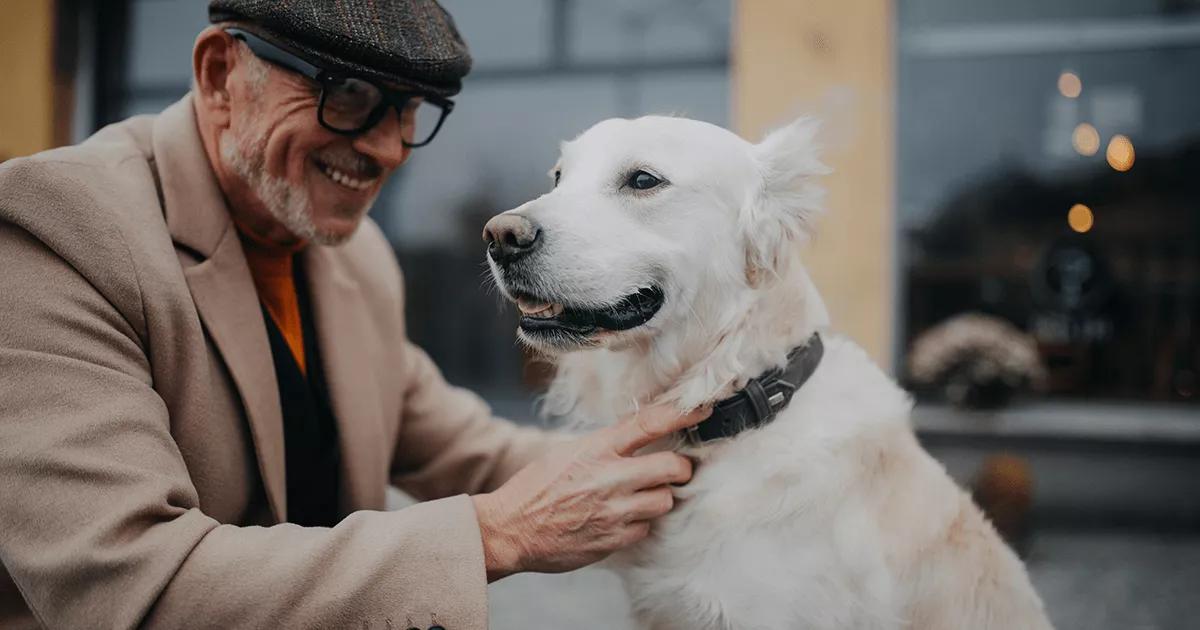
Dog collars fit around the neck and are a simple way to secure a lead to your dog when you are out and about. Not only are they lightweight and easy to put on, but they can be left on all the time.
For nervous dogs, you can try the ADAPTIL Calm Collar: the perfect solution to helping your dog stay calm no matter where they are. Simply fit the adjustable collar around your pooch’s neck and attach their lead to their regular collar as normal.
Adaptable For Each Dog
A great benefit of dog collars is that they come in many different types and materials which makes sure they fit each dog right. For example, flat collars (the standard type) and rolled collars (rolled leather) can work well for dogs with sensitive skin or a coat that mats easily. However, these collar types are not suitable for dogs that pull hard on the lead.
Danger of Injury
If a dog pulls on their collar when on the lead, this can result in damage, injuries and pain. Not only to the spine but also the throat or trachea (airway). Nervous dogs, who can become agitated and scared of things on dog walks and prompted to run away can also experience this issue. There is also the risk a smaller dog could slip out of the collar. In particular, if this is fitted loosely or too large in size. A good fit is when you can place 1 finger between dog’s skin and the collar for smaller dogs or 2 fingers for larger dogs.
Dog Harness
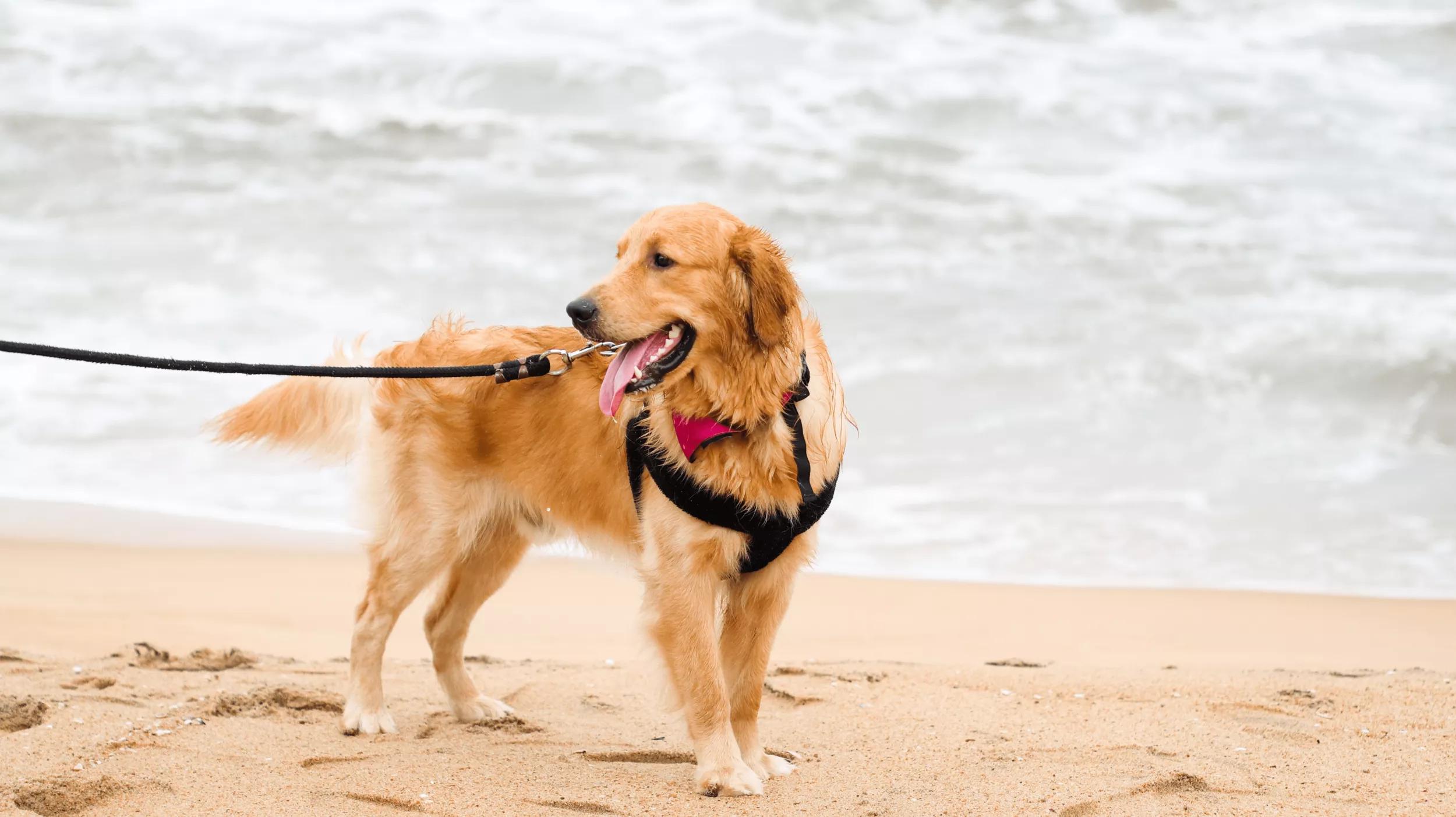
A harness covers a dog’s chest, shoulders and upper back. These disperse the pressure over a larger surface area than collars do, so that less stress is on your dog’s neck. Unlike a dog collar, harnesses are more secure in general. This is because they are less easy for a dog to slip out of and tend to be better fitted.
Harnesses can seem a little more fiddly to fit than a collar, but you can quickly become used to fitting them on to your dog. It’s important to check that it fits correctly and is comfortable to wear for the exercise your dog will be doing. For example, making sure their movement is not hindered and that the harness doesn’t rub if doing a high level of activity.
Harness Clips
When choosing a harness for your dog, be sure to choose the right clip type. A front clip for a lead (the clip is on the dog’s chest) can be useful for dogs that pull on their lead. This acts as an anti-pull harness style as it changes the point of leverage. If your dog pulls, they are then gently turned back towards you. A back clip (which lies on the centre of a dog’s back) can be popular for smaller dogs and is less likely for the lead to then get caught around their legs. Some styles available have both a front and back clip. The two combined offer a double-ended lead for more control with stronger dogs.
Y-Shaped Harnesses
A Y-shaped harness can give greater freedom for shoulder movement. The Y should sit on the dog’s sternum. If it is higher, it could act like a collar for neck pressure. And if too low, it can affect how a dog moves.
Should I Walk My Dog with a Collar or Harness?
When choosing a dog collar or harness for your dog’s walks, you should consider a collar if:
- Your dog spends a lot of time off the lead on walks. As a collar may be easier to use and less likely to catch on things as they run around.
- Your dog’s activity level on the walk may not be carried out comfortably wearing a harness.
- Your harness is not properly fitted, such as being too high up or too low and affects how your dog moves.
- You need something that is comfortable enough to be worn all day and that you can attach an ID tag to.
On the other hand, you may find it better to use a dog harness if:
- Your dog has medical issues (e.g. glaucoma, neck injuries or spinal problems).
- Your dog pulls hard on the lead when walking rather than walking by your side.
- Your dog is a small breed (or brachycephalic breeds) that tends to be better suited to a harness. e.g. Chihuahua, Italian Greyhound, Yorkshire Terriers
- Your dog is nervous and often gets scared on dog walks.
- You are securing your dog in the car, as collars should never be attached to seat belts.
It can be a good idea to get a puppy used to wearing a collar as well as a harness so that later on they are comfortable with both. Your puppy will be learning about loose lead walking but be prepared for lots of enthusiasm as they’ll naturally want to set off to explore!
If you are still unsure on whether a dog collar or harness is best for your dog, speak to your vet healthcare team who will be able to give you guidance based on your individual dog and their needs.
Can My Dog Wear Both a Dog Collar and Harness at The Same Time?
Yes, both harnesses and collars can be worn at the same time, if you buy the right make.
ThunderShirt by ADAPTIL can be worn even with a harness! Simply fit your dog’s ThunderShirt Calming Wrap as normal and then put their harness on top. The gentle pressure applied by the vest will still be effective and provide your dog with comfort in a similar way to that which swaddling an infant does.
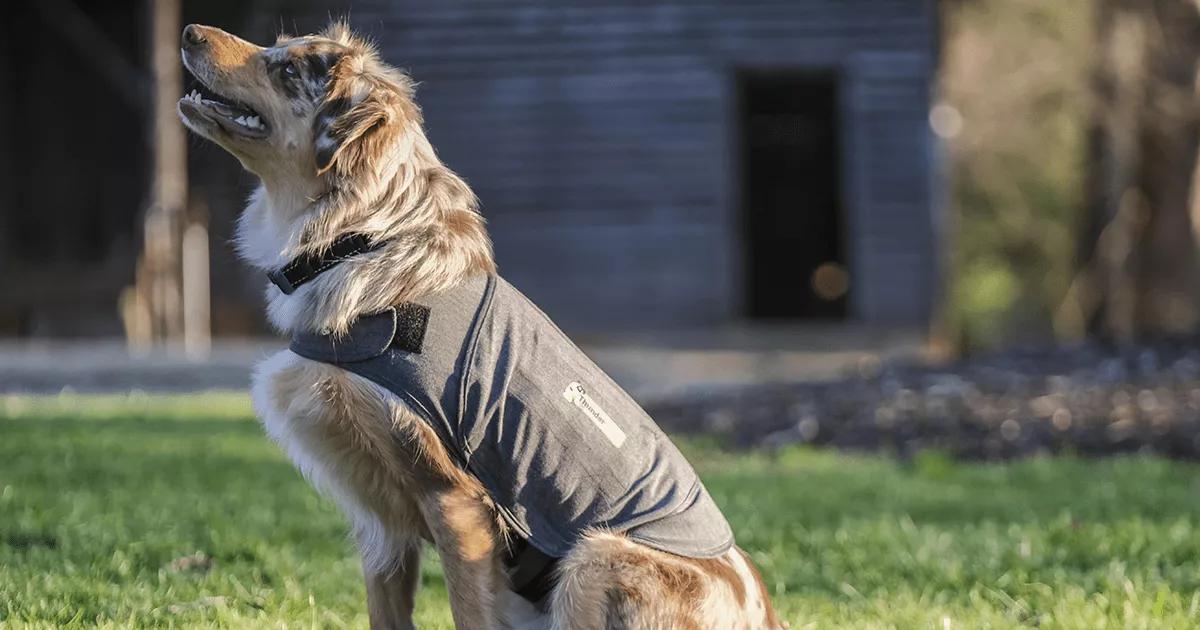
The ADAPTIL Calm Collar can also be worn in conjunction with a normal dog walking collar or harness. Just make sure that their ADAPTIL Collar isn’t under or over their other collar. This ensures the collar can release the pheromones from inside the collar as intended.
How Do I Introduce a Harness to My Dog Who Has Only Ever Worn a Collar?
To introduce a harness to a dog that is used to wearing a collar, it is best to take it slow to ensure they are eased into the process.
- Start by rewarding them for just investigating or showing an interest in the harness (placed on the floor/a surface).
- Once they are comfortable around this new item, get them gradually used to the elements involved in putting the harness on (e.g. is it a step in harness or something that needs to go over their head?).
- Let your dog wear the harness for a short period, and then with their lead attached as you take a stroll in the garden or in your house for example. Remember to reward them as you go through the process and not to move to the next stage until your dog is fully comfortable with the previous one.
- Once you see your dog is comfortable with wearing their harness, you are ready to take the next step and go for a proper walk outside!
Hopefully now you should know more whether a dog collar or harness is best suited to your dog on walks. For further advice on fitting ThunderShirt by ADAPTIL or ADAPTIL Calm Collar with normal dog collars or harnesses, contact us! You can also take a free quiz to find out which of our products is best suited to your dog’s behaviour challenges.


